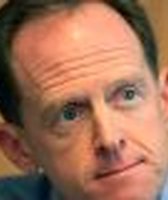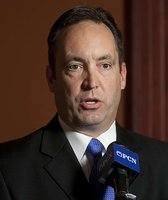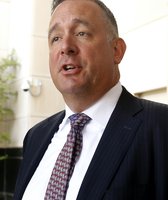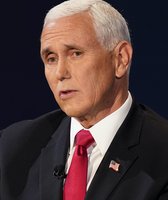Get PolitiFact in your inbox.
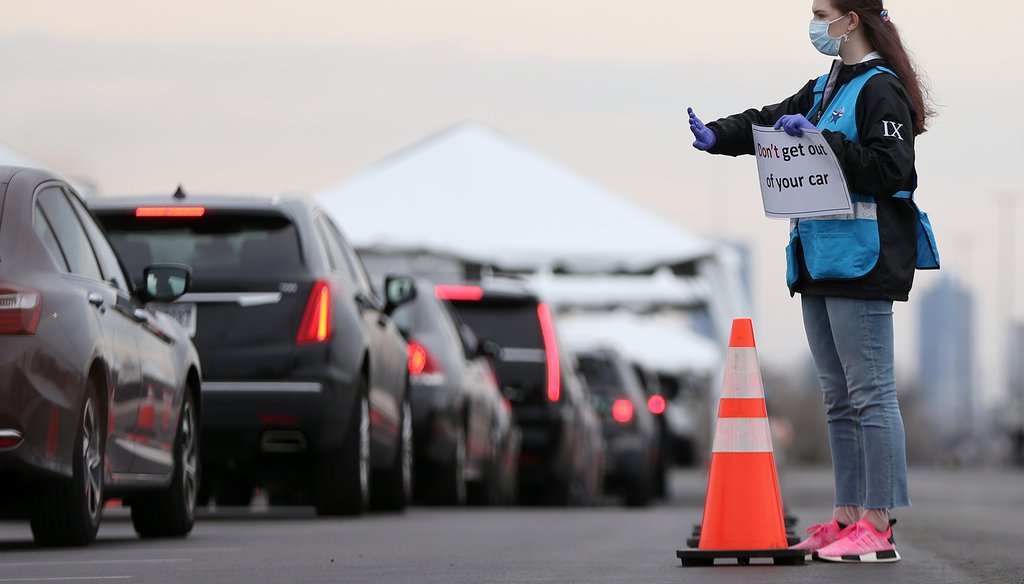
Philadelphia Medical Reserve Corps volunteer Emma Ewing, a sophomore at Temple University, directs cars at the city's coronavirus testing site next to Citizens Bank Park in South Philadelphia on Friday, March 20, 2020. TIM TAI / Inquirer Photographer
If Your Time is short
- A top government scientist went on Good Morning America last week and told millions of viewers that Philadelphia and other nearby cities had become coronavirus hot spots of great concern to the Trump administration.
- That announcement surprised Philadelphia officials who told reporters hours later that things were getting better because the number of new cases reported each day in Philly had finally started to slow. Turns out the officials were looking at different data.
- The case count data and the number of hospital beds still available in Philly prove that the city has turned a corner in its fight against the virus. But data on deaths make clear that the disease has cut deeper here than it has in other big cities
A top government scientist went on Good Morning America last week and told millions of viewers that Philadelphia and other nearby cities had become coronavirus hot spots of great concern to the Trump administration.
"We are concerned about the metro area of Washington, and Baltimore, and we’re concerned about the Philadelphia area," White House Coronavirus Task Force coordinator Deborah Birx told host George Stephanopoulos.
That announcement surprised Philadelphia Health Commissioner Thomas Farley, who spoke at a news conference hours later and said just the opposite.
The number of new coronavirus cases reported each day in Philly had finally started to slow, Farley said, and he wondered aloud whether he and Birx were looking at the same data.
Turns out they were not.
As cities and states compete for a limited supply of ventilators and protective gear for health-care workers, identifying coronavirus hot spots is critically important. Is Philadelphia really one of them? We looked at the data and spoke to an epidemiologist to find out.
Birx became concerned about Philly because of the relatively high rate of coronavirus tests that come back positive – 28%. In Los Angeles County, for example, only 12% of tests are positive for the virus, although California is still way behind in processing test samples.
"This is what, when the president talks about reaching the top and coming down, those are the kinds of things we need to see," Birx said at a White House briefing last week, speaking about the test results in L.A.
In Washington, 17% of tests are positive. In Maryland, 15% are.
But experts cautioned that a city’s share of positive tests can be hard to interpret and shouldn’t be compared.
One reason is that testing criteria vary widely from place to place. Philly has prioritized testing for health-care workers, first responders, and the very sick, so it’s no surprise that the city is seeing so many tests come back positive, said Michael LeVasseur, a Drexel University epidemiologist. Los Angeles, on the other hand, just started offering tests to anyone with symptoms.
"Looking at percent positive tests is not the best metric," LeVasseur said. "It won’t be a good point of comparison until we have more test kits and can do population-level testing."
Widespread testing is what helped South Korea halt the spread of the virus, and public health officials say it’s what the United States will need before national guidelines on social distancing should be relaxed. Even still, President Donald Trump last week floated the idea of restarting the economy without universal testing.
When Farley said last week that Philadelphia’s coronavirus outbreak had gotten a little better, he was speaking about a different data point: the number of new cases reported each day and the fact that growth in the city’s case count had finally started to slow.
The 505 new cases the city reported on Wednesday – the same day Birx appeared on Good Morning America – was a smaller figure than the city had seen earlier last week. But this data point has limitations, too, LeVasseur said, given how long some people are still waiting to have their test results returned.
Another way to compare the severity of Philadelphia’s outbreak with other places is by looking at the number of deaths per 100,000 residents. Philly’s rate of 4.9 deaths per 100,000 people is higher than most big cities. So even as the case counts go down, the death rate makes clear that the virus has hit harder here than in a lot of other areas. (For instance, New York and Chicago are the only other big cities with a higher rate.)
The problem with using data on deaths to compare the severity of local outbreaks is that deaths happen two to three weeks after people get infected. The data can’t show whether the virus has taken hold or been snuffed out in real time, LeVasseur said. His preferred method of comparison is hospital capacity.
Models created by a University of Washington global health research center predict that Pennsylvania hospitals will have more than enough beds for the expected wave of coronavirus patients in the coming days, whereas Connecticut, Rhode Island, and Massachusetts will fall short. New York and New Jersey already have shortages.
"All the social distancing we’re doing is to make sure we’re not overwhelming our health-care workers," LeVasseur said. "If hospitals are holding up, that means we’ve slowed the spread."
Gov. Tom Wolf said last week that if the models hold and the hospitals aren’t overwhelmed when the surge happens, "that’s going to allow us to shut this shutdown down fast."
Asked Friday how best to track the coronavirus outbreak in Philadelphia, Farley said the city will start looking closely at changes in the share of tests coming back positive – the data point Birx drew attention to last week.
Farley said the city’s positive rate started out at about 5%, peaked at about 35%, and recently leveled off at about 30%.
"It’s gone down the last couple of days. That’s in parallel with the case numbers stabilizing," Farley said at Friday’s daily news conference. "We’re going to continue to track that as another indicator."
So, is Philly a coronavirus hot spot?
The case count data and the number of hospital beds still available prove that the city has turned a corner in its fight against the virus. But the data on deaths make clear that the disease has cut deeper here than it has in other big cities – a distinction that makes Philadelphia deserving of extra resources and support.
Our Sources
Good Morning America, "White House coronavirus expert gives updates on US response," April 8, 2020
The Philadelphia Inquirer, "As Philly officials see positive signs on COVID-19, White House fears a Pa. hotspot and may send more aid," April 8, 2020
Los Angeles Times, "All L.A. residents with symptoms can now get coronavirus tests as restrictions are lifted, Garcetti says,"April 6, 2020
Government of the District of Columbia, coronavirus data, accessed April 10, 2020
Government of the State of Maryland, coronavirus data, accessed April 10, 2020
Phone interview with Michael LeVasseur, Drexel University epidemiologist, April 10, 2020
The Philadelphia Inquirer, "Where Philadelphia Ranks in Coronavirus Deaths," April 8, 2020
University of Washington Institute for Health Metrics and Evaluation, coronavirus projections, accessed April 10, 2020






